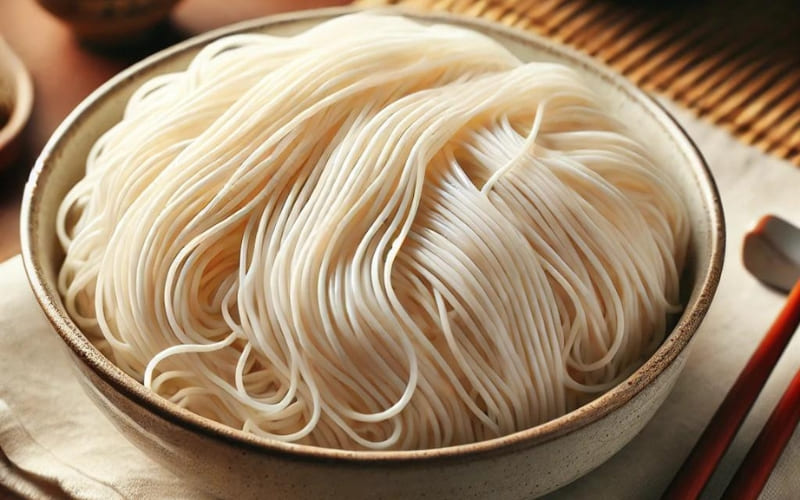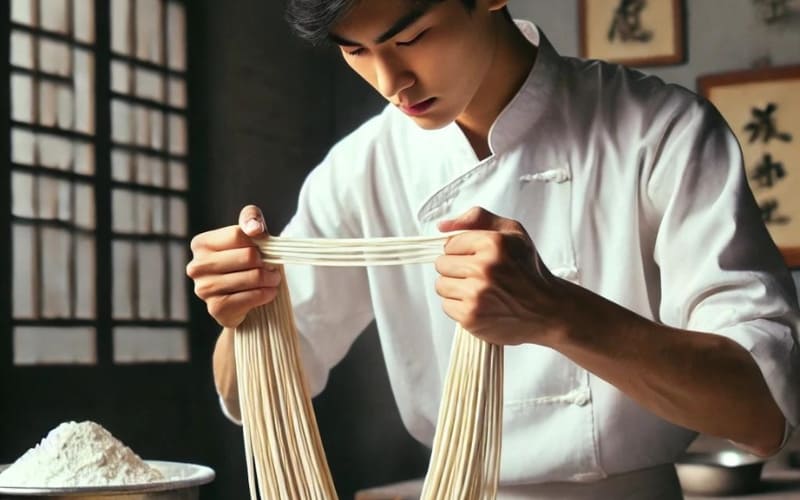
Chinese Noodle: What Are Those Thin Chinese Noodles Called?
What Are Those Thin Chinese Noodles Called?
I often find myself craving those deliciously thin Chinese noodles that are such a staple in various dishes. Have you ever wondered what they're called? The world of Chinese noodles is vast and fascinating, with each type offering unique textures and flavors that add a distinct touch to different meals. Let's delve into the mystery and explore the popular types of thin Chinese noodles that make our taste buds dance with joy.
Unveiling the Mystery: Popular Types of Thin Chinese Noodles
When it comes to thin Chinese noodles, several types stand out due to their unique characteristics and versatility. One of the most well-known types is wonton noodles. These noodles are a staple in noodle soups and are cherished for their light and springy texture. I love how they perfectly complement the rich broth, creating a harmonious balance of flavors.
Another favorite is chow mein noodles, which are the stars of stir-fries. Their slightly thicker texture holds up well to high heat, allowing them to absorb the flavors of the sauce and ingredients beautifully. It's fascinating how a simple change in cooking technique can transform the humble noodle into a culinary delight.

Then there are rice vermicelli noodles, often referred to as the versatile thread-like noodles. These are incredibly thin and delicate, making them perfect for light dishes like salads and spring rolls. Their subtle flavor acts as a canvas for the vibrant ingredients they are paired with, providing a delightful crunch in every bite. Today, I’m going to take you on a culinary journey to uncover the magic behind these beloved noodles, with a special spotlight on The Magic Noodle in Las Vegas. The Magic Noodle has the best thin noodle i have been tried, here The Magic Noodle in Las Vegas menu for you : https://themagicnoodle.net/menu
Beyond Names: Understanding the Characteristics of Thin Chinese Noodles
Thin Chinese noodles come in various textures, sizes, and colors, each offering a unique eating experience. From the delicate and smooth wonton noodles to the slightly chewy chow mein noodles, the texture can greatly influence the dish's overall feel.
The size and shape of these noodles also vary significantly. While rice vermicelli noodles are almost thread-like, chow mein noodles are thicker and more robust. This variation allows for different culinary applications, ensuring there's a perfect noodle for every dish.
In some cases, color variations can also play a role. For example, egg noodles have a distinct yellow hue, while rice noodles are typically white. These subtle differences add visual appeal and can hint at the noodle's ingredients and flavor profile.
A Culinary Journey: Exploring the Uses of Thin Chinese Noodles
Thin Chinese noodles are incredibly versatile, finding their way into a variety of dishes. They are often used in soups and broths, where their delicate texture can soak up the rich flavors of the soup, providing a comforting and satisfying meal. I find that a bowl of wonton noodle soup is perfect for a cozy evening in.

In stir-fries, these noodles shine as they absorb the savory sauces and blend seamlessly with vegetables and proteins. Chow mein noodles, with their slightly chewy texture, are my go-to for a quick and delicious stir-fry.
These noodles also make excellent additions to salads and spring rolls. The light and airy rice vermicelli noodles add a refreshing element to salads, while their firm texture holds up well in spring rolls, providing a delightful contrast to the crunchy vegetables.
A Dive Deeper: The Rich History of Chinese Noodles
The history of Chinese noodles is a rich tapestry of ancient origins and regional variations. Dating back over 4,000 years, these noodles have evolved significantly, with each region in China offering its own unique take on this beloved food. From the hearty wheat noodles of northern China to the delicate rice noodles of the south, the diversity is astounding.
Beyond China: The Global Reach of Thin Noodles
Chinese noodles have made their mark globally, influencing and being influenced by other Asian noodles. For instance, Japanese ramen and Thai pad Thai noodles share similarities with Chinese noodles but have distinct differences that make them unique. This global exchange has enriched the culinary world, offering a multitude of noodle dishes for us to enjoy.
Cooking Up a Feast: Tips for Preparing Thin Chinese Noodles
Cooking thin Chinese noodles to perfection requires a bit of know-how. Selecting the right noodles for your dish is crucial. For soups, wonton noodles are ideal, while chow mein noodles are best for stir-fries.

The cooking technique also matters. Boiling or soaking rice vermicelli noodles ensures they retain their delicate texture, while stir-frying chow mein noodles gives them a delightful chewiness. Pairing these noodles with the right sauces and ingredients can elevate your dish to new heights. For instance, a simple soy sauce and sesame oil dressing can enhance the natural flavors of the noodles without overpowering them.
Further Exploration: Delving into the World of Chinese Cuisine
The world of Chinese cuisine is vast and exciting, with so many popular noodle dishes to explore. From the spicy Dan Dan noodles of Sichuan to the flavorful beef noodle soup of Taiwan, there's a noodle dish for every palate. Must-try regional specialties include Lanzhou hand-pulled noodles, known for their unique preparation method, and biang biang noodles, famous for their broad, belt-like shape.
As you dive deeper into the rich history and diverse uses of thin Chinese noodles, you'll discover a culinary tradition that is both ancient and ever-evolving. Whether in soups, stir-fries, or salads, these noodles continue to captivate our taste buds and bring joy to our dining experiences.
Conclusion
So next time you're at a Chinese restaurant or cooking at home, I encourage you to explore the various types of thin noodles and experiment with different dishes. You might just find a new favorite that adds a delightful twist to your meals.

